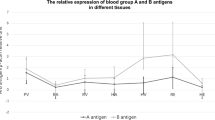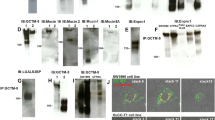Abstract
The Wilms' tumour is a solid childhood tumour of the kidney, consisting of blastema, tubules and mesenchyme. Embryonic tumours, such as Wilms', may arise as a result of a developmental disturbance in differentiation. The expression of class I and II major histocompatibility complex (MHC) antigens was investigated on 6 Wilms' tumours and related to that in the developing human kidney in this immunohistological study, using a panel of monoclonal antibodies. The Wilms' tumour blastemal cells were class I MHC antigen negative, but differentiated structures were positive. Class II MHC antigens were not observed in Wilms' tumours. In the developing human kidney class I MHC antigen expression was observed on glomeruli from 8 weeks and on tubules from 13 weeks gestational age. Class II MHC antigen expression was observed on glomeruli from 11 weeks and on tubules from 13 weeks gestation. These results suggest that the blastemal cells within the Wilms' tumour may reflect an early stage of development with respect to the expression of MHC antigens.
Similar content being viewed by others
Author information
Authors and Affiliations
Rights and permissions
About this article
Cite this article
Borthwick, G., Hughes, L., Holmes, C. et al. Expression of class I and II major histocompatibility complex antigens in Wilms' tumour and normal developing human kidney. Br J Cancer 58, 753–761 (1988). https://doi.org/10.1038/bjc.1988.303
Issue Date:
DOI: https://doi.org/10.1038/bjc.1988.303
- Springer Nature Limited
This article is cited by
-
Tumor infiltrating leukocytes (tils) during progressive tumor growth and BCG-mediated tumor regression
Virchows Archiv B Cell Pathology Including Molecular Pathology (1990)




